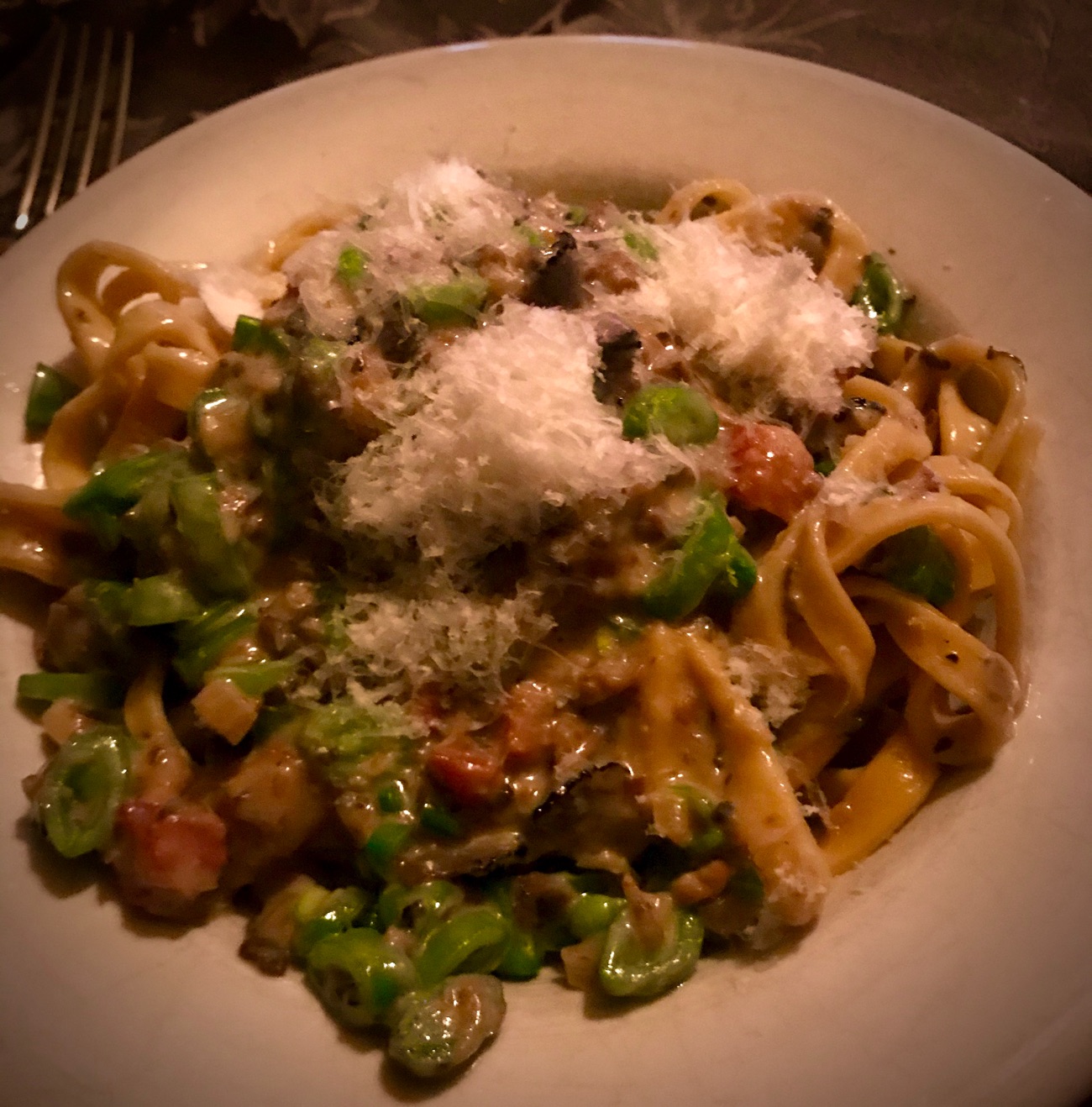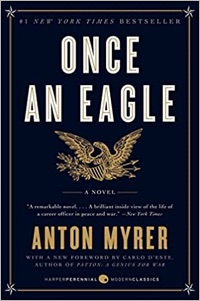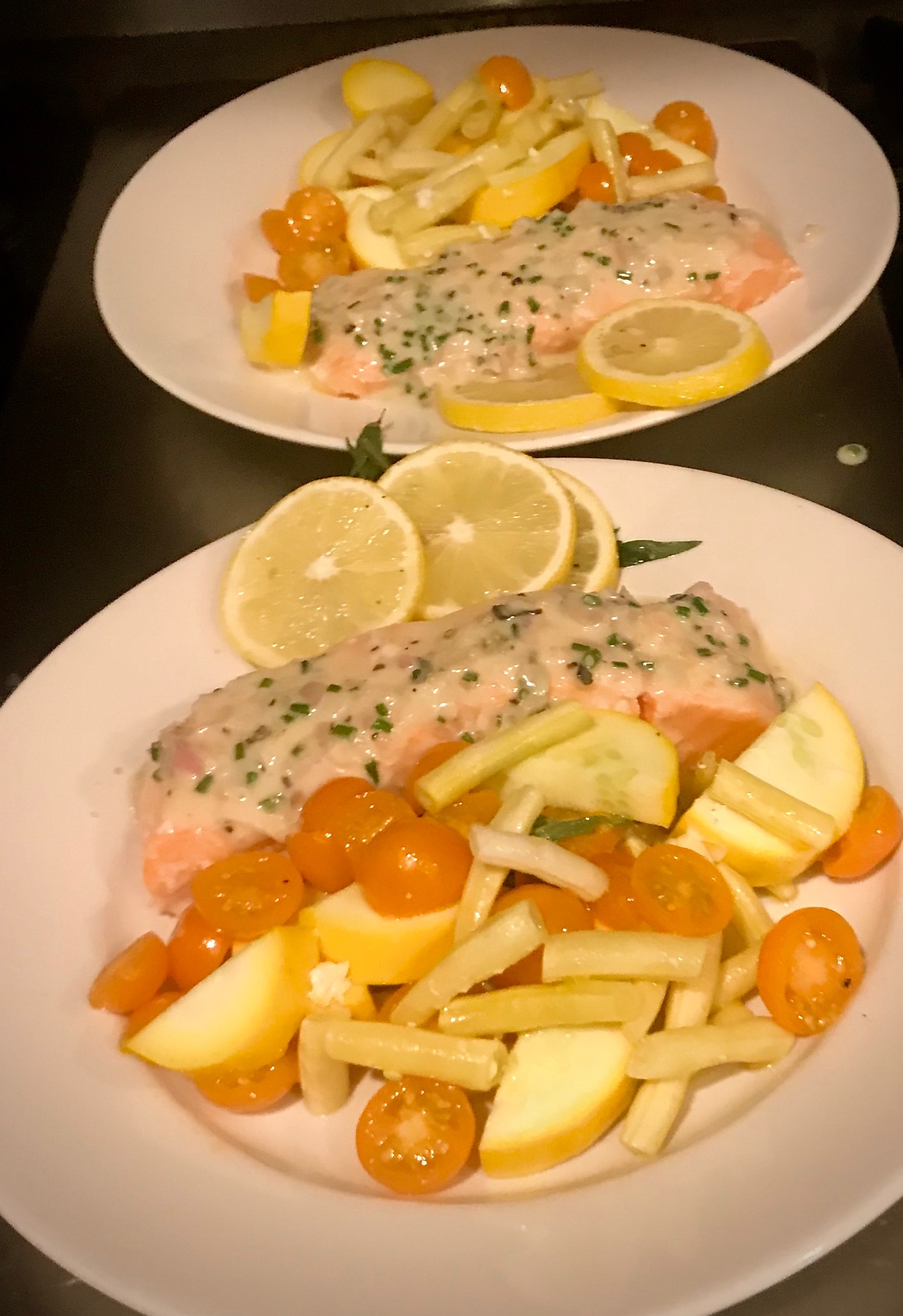
Truffle Shuffle (1,2) announced a class on carbonara, and this time I signed up on my own ticket because I really like carbonara. Also, I’ve got some anchors that range from Peter Merholz’s excellent Bay Area Carbonara to the carbonara they serve at La Carbonara in the Piazza de Fiore.
This was an amped-up carbonara with fresh taglietelle and a tartufata of mixed truffles and white mushrooms, with chiffonaded (!) snap peas added at the last minute for some textural and color variety. It was fun to make pasta with French Laundry alumni, and it turned out great. It was fun, too, to see the auteur behind pastagrannies.com discuss the making of pasta.
If you don’t cook a ton, that’s OK: these online classes are great for you. They send all the ingredients, including a suitable cocktail with which to relax. This one had a Paolo Mandini, which is a cocktail intended for carbonara. They also take care to keep you out of the weeds; in fact, I wish they were a little more liberal in their criticism. (I think, in part, Truffle Shuffle is a fantasy of culinary school as it ought to have been, where the kids are all above average.)
Back when the end of the world as we knew it began, I observed that in The Art Of Escapist Cooking, Mandy Lee had developed an alternative theory of flavor. Here, between Truffle Shuffle and Pasta Grannies, is another: it's just dinner (or lunch) but it's important even so to Do It Right, even if you’re old and infirm. An interesting observation of pasta grannies is that each granny knows maybe two or three pasta shapes; the idea that there are zillions of shapes for zillions of sauces is a product of travel and scholarship, not the Way Things Ever Were.

